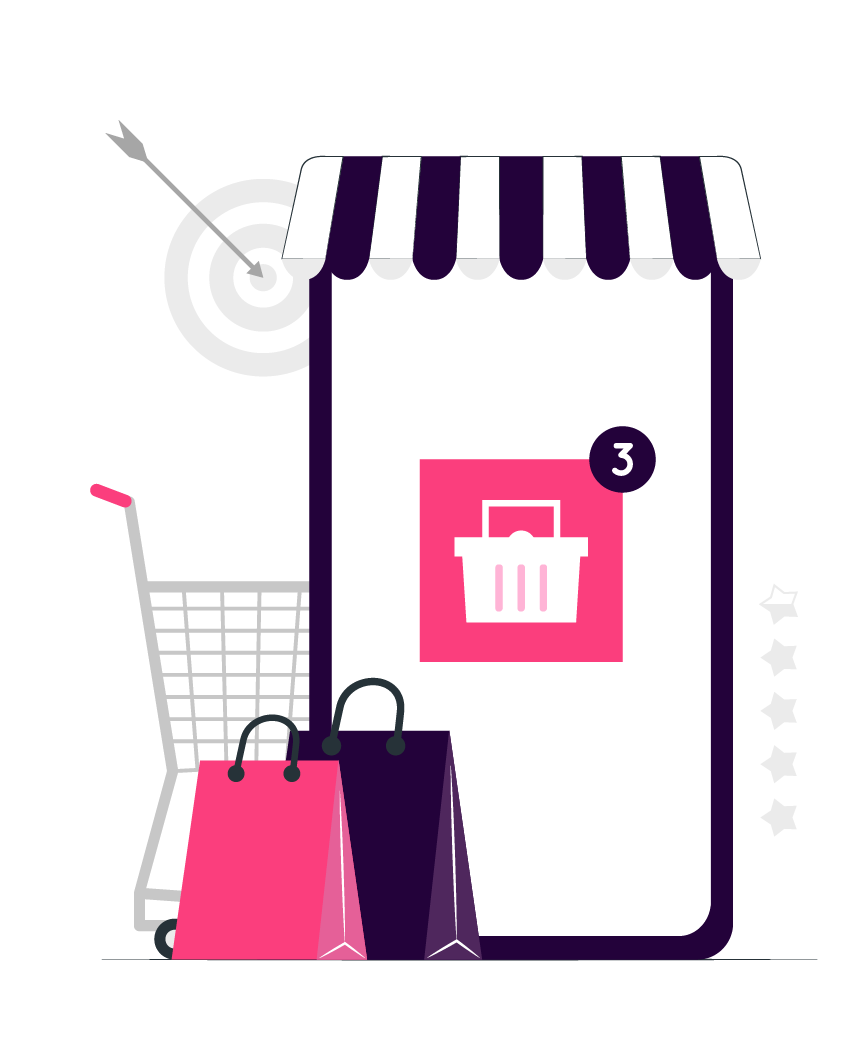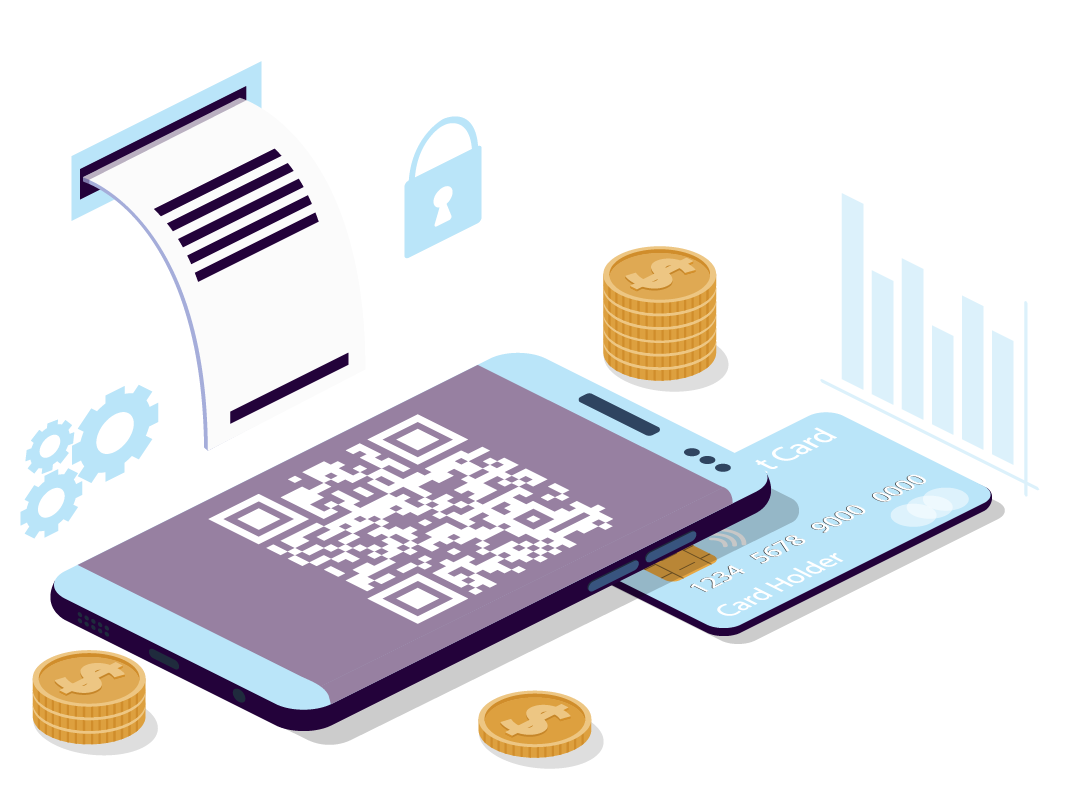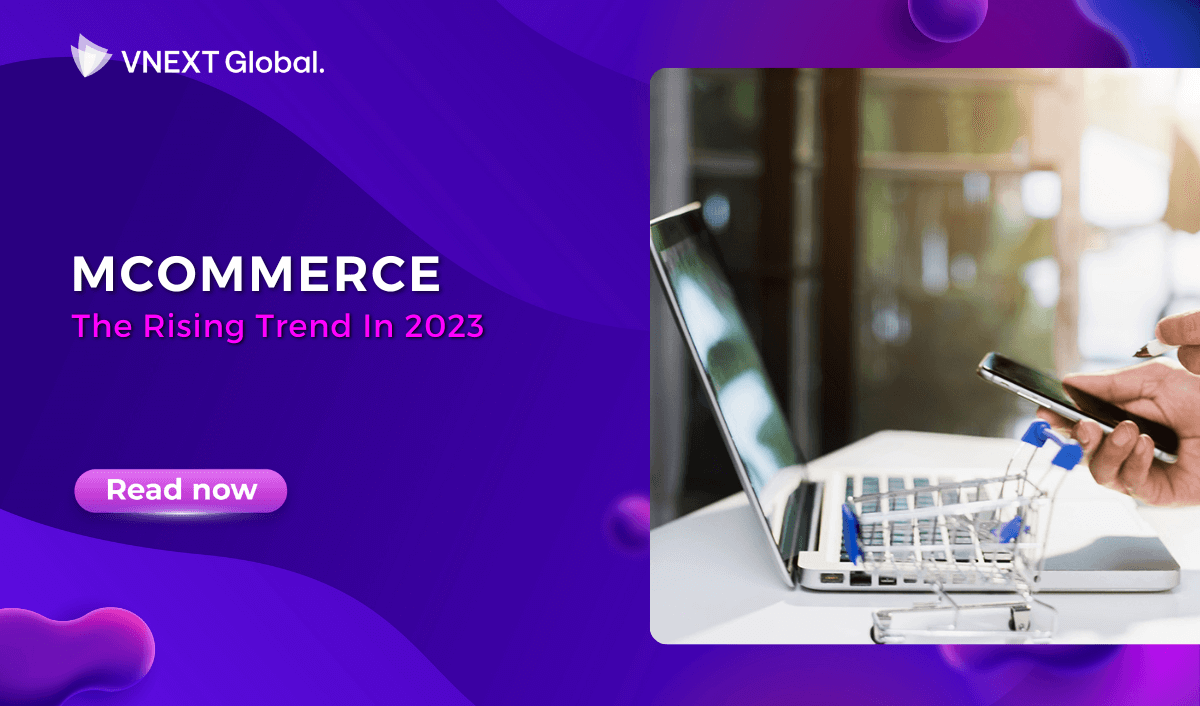Author: Chi Vo - Content Writer
In recent years, e-commerce has emerged as a giant in retail industry, yet, the true next-generation trend for shopping is anticipated to be mcommerce. Indeed, the figures speak for themselves, when 70% of e-commerce sales are made through mobile apps, according to Statista. Specifically, thanks to technological advances, mcommerce is ready to become the mainstream of retailing industry, which simplifies and leverages customer experience. In this article, VNEXT Global is going to outline some main points about mcommerce, regarding its definition, examples, benefits and how to put it into practice.
What does an m-commerce stand for?
M-commerce, often known as mobile commerce, refers to the buying and selling of goods through mobile devices.
Mobile commerce is a subcategory of e-commerce or the mobile equivalent of e-commerce. The mobile commerce vertical is expanding rapidly, with the amount and proportion of digital purchases made on mobile devices increasing annually. As mobile purchasing becomes more accessible and as more people across the world acquire access to smartphones and tablets, mobile purchasing capacity continues to increase.

What are examples of mcommerce?
Three major categories account for the greatest increase in m-commerce:
- In-app shopping (such as buying clothing items via a retail app)
- Mobile banking
- Digital wallets such as Apple Pay, Android Pay, and Samsung Pay Mobile ticketing
There is substantial overlap with fintech, but only because mobile commerce encompasses the smartphone habits that lead to a mobile purchase as well as the enabling technology.

Why mcommerce is a rising trend in 2023?
Insider Intelligence predicts that by 2023, 8 percent of all retail transactions will be conducted by mobile device. This is projected to surpass 10% by 2025. As customers rely on digital devices more than ever, m-commerce has the potential to become a major shopping channel, and it is expected that mobile will inch closer to becoming consumers' preferred route for online shopping within the next five years.
Facebook, Twitter, and Pinterest are among the social media platforms that have integrated "buy buttons" that enable consumers to make purchases without leaving the platform. In addition, numerous retailers have implemented one-click checkout on their websites. This strategy requires shoppers to enter their payment information only once, after which they can make purchases using the one-click option without reentering it.
As app usage continues to increase, it will be a significant driver to sales growth, especially considering that Millennials and Generation Z have enormous purchasing power. These tech-savvy audiences have the potential to increase volume, as they are more likely to shop on their cellphones.

How to effectively implement mcommerce into your business?
Now you understand the undeniable advantages that mcommerce may bring to your business, especially in terms of ROI, then here are some valuable suggestions for your mobile strategy!
Focus on customers’ cart
Numerous merchants invest in the design, product selection, and marketing of their mobile sites, yet completely disregard the shopping cart.
SeeWhy reports that a staggering 97 percent of mobile carts are abandoned. This is due to the fact that mobile shopping carts are crowded with extraneous items and many displays that impede the transaction.
Mobile guest checkouts contain an average of 12 screens to complete a purchase.
Therefore, ecommerce merchants who streamline their mobile checkout experience will substantially reduce cart abandonment and enhance conversions.
Mobile optimization
Over sixty percent of Facebook and Twitter users access these sites using mobile devices.
In other words, mobile is the default social networking platform.
To offer the optimal consumer experience, it is essential that social media posts contain links to landing pages that are optimized for mobile devices.
Otherwise, you run the risk of aggravating your social media followers, which could deter them from clicking on future postings.
Design email for mobile
According to BlueHornet, 76 percent of users use their smartphones to organize emails prior to seeing them on a computer.
More than 80 percent of non-optimized emails will be deleted without being opened, and 30 percent of consumers will take the additional step of completely unsubscribing.
Paying for PPC
Google's new Enhanced Campaigns, which incorporates significant modifications for mobile pay-per-click, was released recently. By default, your advertisements will appear on mobile devices, tablets, and laptops.
You can no longer divide your PPC money across many devices.
If a consumer searches Google from a mobile device, your ad will now appear in the search results.
Your search advertisements must therefore direct customers to the product page on your mobile site; otherwise, you will be paying for clicks that do not result in a sale.
Do not repeat the same error
You can predict the future of mobile commerce by examining the past of online commerce.
Similarly to how ecommerce has developed to incorporate numerous channels, a successful mobile commerce strategy requires multiple channels.
To increase sales and return on investment, you must streamline your mobile cart, optimize your social media and PPC landing pages for mobile, and create email campaigns that can be viewed on smartphones.
Now is the time to act, or you will spend the next five years playing catch-up.

Final thoughts
If you are looking for a trusted IT partner, VNEXT Global is the ideal choice. With 14+ years of experience, we surely can help you to optimize your business digitalization within a small budget and short time. Currently, we have 400+ IT consultants and developers in Mobile App, Web App, System Development, Blockchain Development and Testing Services. We have provided solutions to 600+ projects in several industries for clients worldwide. We are willing to become a companion on your way to success. Please tell us when is convenient for you to have an online meeting to discuss this further. Have a nice day!
Author: Chi Vo - Content Marketing Executive












